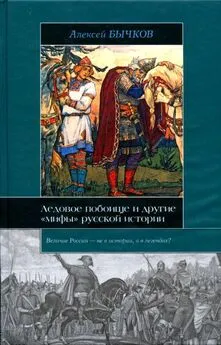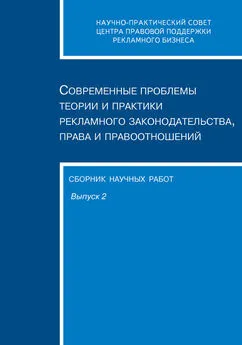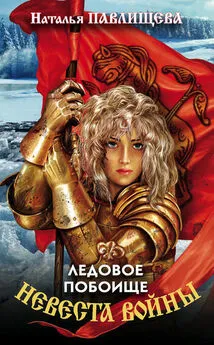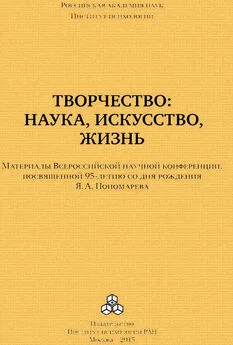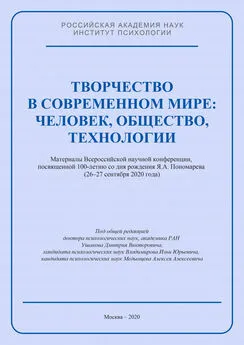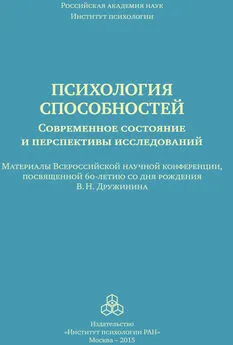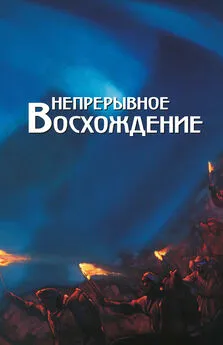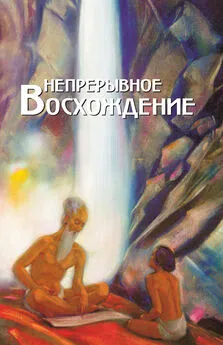Денис Хрусталёв - Ледовое побоище в зеркале эпохи [Сборник научных работ, посвященный 770-летию битвы на Чудском озере]
- Название:Ледовое побоище в зеркале эпохи [Сборник научных работ, посвященный 770-летию битвы на Чудском озере]
- Автор:
- Жанр:
- Издательство:Липецкий государственный педагогический университет
- Год:2013
- Город:Липецк
- ISBN:978-5-88526-636-9
- Рейтинг:
- Избранное:Добавить в избранное
-
Отзывы:
-
Ваша оценка:
Денис Хрусталёв - Ледовое побоище в зеркале эпохи [Сборник научных работ, посвященный 770-летию битвы на Чудском озере] краткое содержание
Ледовое побоище в зеркале эпохи [Сборник научных работ, посвященный 770-летию битвы на Чудском озере] - читать онлайн бесплатно ознакомительный отрывок
Интервал:
Закладка:
Bessudnova Marina (Lipezk). Teutonic Order in Livonia at the initial stage of its existence (1237–1270) . By the beginning of the Russian-Livonian War in 1240–1242 the Livonian branch of the Teutonic Order was going through a moment of crisis caused by the rearrangement of its internal organization after the merger with the Order of the Sword, by changing the order of the Knights' acquisition, loss of northern Estonia and the relocation of the main theater of the war in Kurland. In the organization's 1240–1241 campaigns against the Russian land management order, is not likely to participate. They were the result of arbitrary actions of the Knights of number of northern convents, which were dominated by the former platypus.
Salmina Elena, Salmin Sergej (Pskov). Archaeological evidence and the chronicles of hostilities first quarter of the XIII century Zavelich'e medieval Pskov . The article is devoted to the archaeological findings related to the military operations on the territory of medieval Pskov. Arising as a result of armed conflicts the horizons of desolation Zapskovye, Zavelich'e and territories Roundabout City were also stadied.
Pezhemskij Denis (Moskau). Anthropology of the urban and rural population of the Pskov-Livonia porubezh'e . The study captures the lack of sharp anthropological boundaries in the areas of the Livonian-Russian contacts and mottled anthropological composition of the population in the border areas. This suggests that the nature of the resettlement of the nations had special significance in establishing the Russian-Livonian borders, so that they were left permeable on both sides.
Bessudnova Marina (Lipezk), Kun Evgenij (Velikij Novgorod). Trade policy Livonian landsgerrov at the initial stage of development of Western European trade Veliky Novgorod . Not only the mutual interest and the convenient communication but also Livonian landesgerr trade politics that had a need for continuous and intensive introduction to Livonia human and material resources contributed to Russian-Livonian trade in the XIII century. The development of, but also landsgerrov that. Livonian could not act against the interests of the North German cities and destroy the Novgorod-German contacts but although was able to effectively use them in their politics with trade embargo.
Selesnev Jurij (Voronež). Prince Alexander of Kostroma (Nevsky) at the court of the Tartar Khan . It considered the problem of the number of Prince Alexander (Nevsky) trips to the Tartar Khan rate and their temporal duration that makes it possible to judge the nature including the Prince in the Horde's statehood and the degree of dependence of the Russian principalities on the Horde in 1240–1260.
Sekretar' Ludmila (Velikij Novgorod). Sekretar' Ludmila (Velikij Novgorod). Alexander Nevsky and St. Anthony Monastery of Novgorod . The article is dedicated to the honoring traditions of Alexander Nevsky in Great-Novgorod Monastery of St. Anthon the formation of which was carried out in the interests of the individuals, the monastery and public policy.
Boldyrev Roman (Lipezk) . The political struggle in Pskov and its role in preparing a campaign of the Livonian Order in the Russian land. Disagreements with Novgorod Pskov pushed to establish an alliance with Livonians and joint action against Novgorod. This made Pskov weak link in the defense of the western Russian borders.
Končakova Elisaveta (Lipezk). Battle on the Ice in the reflection of hagiography and Pskov-Novgorod chronicle tradition . Historiographical image of the Battle on the Ice is based, primarily, on the evidence of such a biased source as the «Life of Alexander Nevsky», and more objective descriptions contained in chronicles used by historians as an accessory.
Bessudnov Daniil (Lipezk). The idealization of the image of Alexander Nevsky in Russian historiography . The image of Alexander Nevsky in many ways continues to maintain ideal nature, which he has acquired over a long period of functioning as an ideological and propaganda tools during the numerous political campaigns.
Shebanova Alla (Lipezk). St. Alexander Nevsky in Russian historical and Church monumental paintings of the XIX–XXI centuries . The image of Alexander Nevsky found a bright reflection in the artists' work of 19 th-21 st centuries, who created masterpieces devoted to the personality of Saint Alexander Nevsky and episodes from the life of blessed Prince. Effect of the composition, picturesqueness, masterful image of surroundings and historical details are main qualities of paintings by Russian artists, which reflected the significance and grandeur of the great man's image.
Список сокращений
БЛДР— Библиотека литературы Древней Руси.
ВЕДС— Восточная Европа в древности и средневековье.
ВИ— Вопросы истории.
ВИД— Вспомогательные исторические дисциплины.
ВИЖ— Военно-исторический журнал.
Воскр. — Летопись по Воскресенскому списку // ПСРЛ. Т. 7. М., 2001.
ГВНП— Грамоты Великого Новгорода и Пскова. М., Л., 1949.
ЖАН 1995— Житие Александра Невского. Первая редакция. 1280-е годы. Составитель Ю.К. Бегунов // Князь Александр Невский и его эпоха. СПб., 1995.
ЖАН 2000— Житие Александра Невского // БЛДР. СПб., 2000. Т. 5: XIII век.
ИЗ— Исторические записки.
Ист. СССР— История СССР.
ЛА— Летописный сборник, именуемый летописью Авраамки // ПСРЛ. Т. 16. СПб., 1889.
МЛС— Московский летописный свод конца XV века // ПСРЛ. Т. 25. М., Л., 1949.
Н1Л— Новгородская первая летопись старшего и младшего изводов // ПСРЛ. Т. 3. М., 2000.
Н2Л— Новгородская (вторая) архивская летопись // ПСРЛ. Т. 30. М., 1965.
Н4Л— Новгородская четвертая летопись // ПСРЛ. Т. 4. Ч. 1. Пг., 1915.
НИС— Новгородский исторический сборник.
НЛ— Летописный сборник, именуемый Патриаршей или Никоновской летописью // ПСРЛ. Т. 11. М., 2000.
ОИ— Отечественная история.
П1Л— Псковская 1-я летопись // ПСРЛ. Т. 5. Вып. 1. М., 2003.
П2Л— Псковская 2-я летопись // ПСРЛ. Т. 5. Вып. 2. М., 2000.
П3Л— Псковская 3-я летопись // ПСРЛ. Т. 5. Вып. 2. М., 2000.
ПИВН— Памятники истории Великого Новгорода.
ПСРЛ— Полное собрание русских летописей.
С1Л— Софийская первая летопись старшего извода // ПСРЛ. Т. 6. Вып. 1. М., 2001.
FMU— Finlands Medeltidsurkunder. Bd. 1. Helsingfors, 1910.
HCL— Heinrici Chronicon Lyvoniae.
HGB II— Hansische Geschichtsblätter.
HUB 1— Hansisches Urkundenbuch, Bd. 1. Halle, 1876.
LRC— Livländische Reimchronik mit Anmerkungen, Namenverzeichnis uns Glossar. Hrsg. L. Meyer. Padebom, 1876.
LUB 1— Liv-, Est- und Curländisches Urkundenbuch. Abt. 1. Bd. 1. Reval, 1853; Bd. 3. Reval, 1857.
Lüb UB 3— Lübeckisches Urkundenbuch. Abt. 1. T. 3. Lübeck, 1871.
QuStzGDO— Quellen und Studien zur Geschichte des Deutschen Ordens.
SRL— Scriptores rerum Livonicarum.
SRP— Scriptores rerum Prussicarum.
ZfO— Zeitschrift für Ostforschung.
Исследования
1. Александр Невский и история России. Материалы научно-практической конференции. «Новгородский государственный объединённый музей-заповедник», Новгород, 1996.
2. Андреев В.Ф. Александр Невский и Новгород // Средневековая и новая Россия. Сб. науч. ст. к 60-летию И.Я. Фроянова. СПб., 1996. С. 244–253.
3. Аракчеев В.А. Государство и право новгородской и псковской республик в XII–XV веках: уч. — мет. пособие. Псков, 2011.
4. Аракчеев В.А. Псков и Ганза в эпоху средневековья. Научная справка. Псков, 2012.
5. Артемьев А.Р. Ледовое побоище и битвы XIV — начало XV вв. на северо-западе Руси // ВИ. 1999, № 2. С. 148–152.
6. Баловнев Д. Треск от копий, звон от мечей // Родина. 2002, № 3. С. 38–39.
7. Бассалыго Л.А. Новгородские тысяцкие. Часть 1 // НИС. Вып. 11 (21). СПб., 2008. С. 33–67.
8. Бессуднова М.Б. «Старая Ливония» в контексте межгосударственного противостояния // Вехи минувшего. Ученые записки исторического факультета ЛГПУ. Вып. 5. Липецк, 2009. С. 270–298.
9. Бойцов М.А. Вместо Палестины — Ливония // Вестник МГУ. Серия: История. 1995, № 2. С. 59–77.
10. Бокман Х. Немецкий орден. Двенадцать глав из его истории. Пер. В.И. Матузовой. М., 2004.
11. Бредис М.А. Ливония и Псков против языческой Литвы: Битва при Сауле, 1236 год // Россия и Германия. Т. 3. М., 2004. С. 15–43.
12. Булатников Т.А. Взаимоотношения Руси с немецкими орденами (1207–1500 гг.) // Феодальное общество: идеология, политика, культура. М., 2003. Вып. 4. С. 28–31.
13. Булатников Т.А. Торговая организация ордена немецких крестоносцев в XIII — начале XV в. // ВИ. М., 2009, № 5. С. 157–161.
Читать дальшеИнтервал:
Закладка:
![Обложка книги Денис Хрусталёв - Ледовое побоище в зеркале эпохи [Сборник научных работ, посвященный 770-летию битвы на Чудском озере]](/books/1062589/denis-hrustalev-ledovoe-poboiche-v-zerkale-epohi-sbornik-nauchnyh-rabot-posvyachennyj-770-letiyu-bitvy-na-chudskom-ozere.webp)
